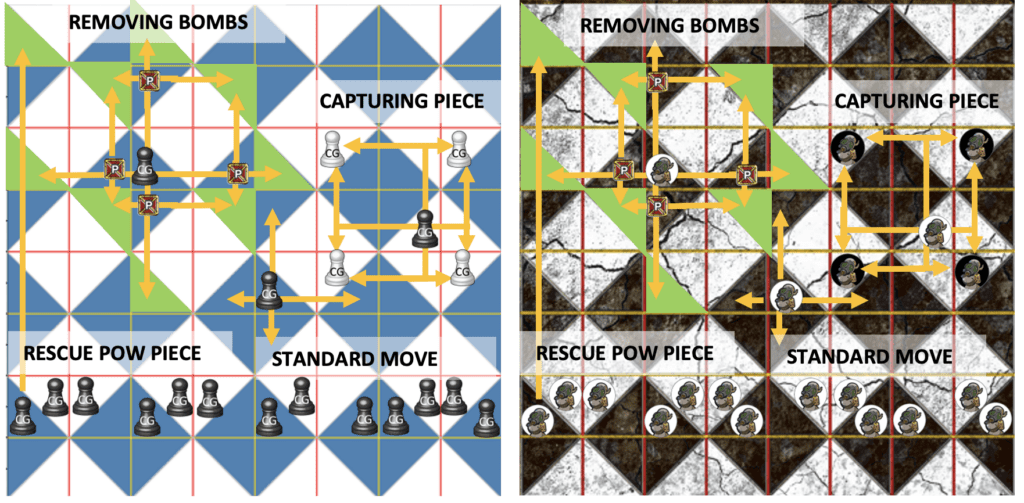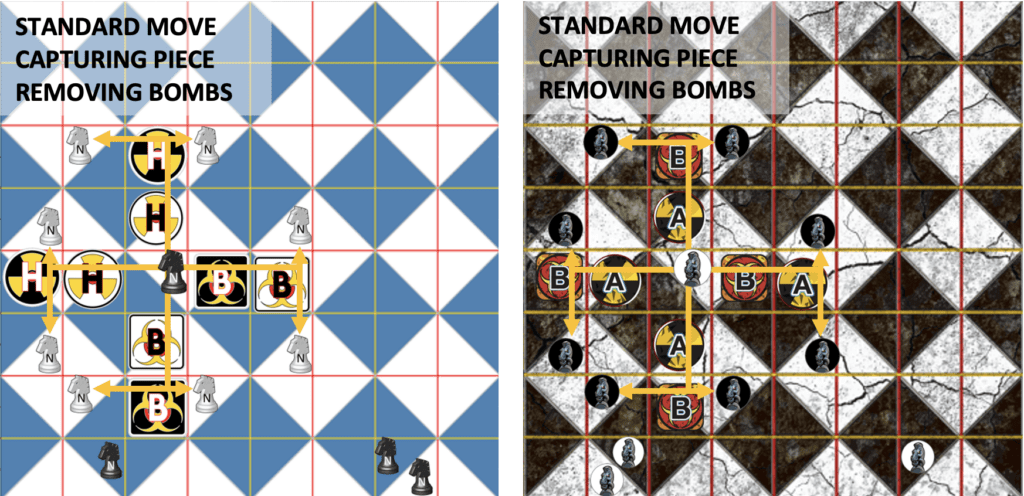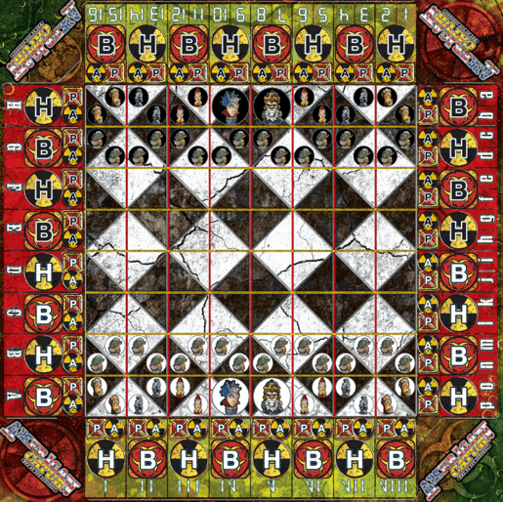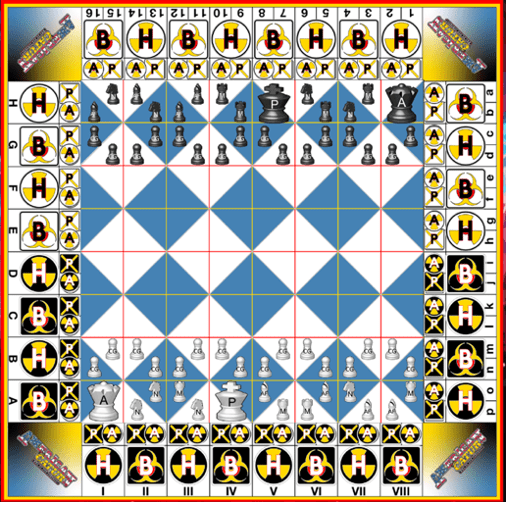The Pawn/Coast Guard piece possesses distinct roles and strategies that differ from standard chess. Understanding these differences and using them to your advantage is crucial for success in this variant. The Pawn/Coast Guard, represented by the symbol “PC,” serves as a gatekeeper on the chessboard and carries a value of 1 point. Let’s delve into the unique characteristics and strategies associated with the Pawn/Coast Guard:
1. Defensive Gatekeepers: The primary role of the Pawn/Coast Guard is to serve as the initial line of defense for each player. These pieces stand in front of the more valuable pieces, such as the King/President, protecting them from potential threats. Their position in the second row underscores their importance as guardians.
2. Underrated Value: Despite their low initial value, it’s essential to recognize the significance of Pawn/Coast Guards. In the final stages of the game, their role can become pivotal, and they can play a crucial part in achieving checkmate by working in tandem with other pieces.
3. Long-Term Potential: Correct positioning of your Pawn/Coast Guards can set the stage for future tactical opportunities. When combined with careful planning, these seemingly unimportant pieces can become powerful assets in the endgame.
4. Restricted Initial Movement: In American Catur, the Pawn/Coast Guard’s first move is limited to a single step similar to standard chess but you can launch any bomb so you can jump over it to move a extra space. This initial move might seem modest, but it’s a fundamental aspect of the game’s strategy.
5. Unique Capture Pattern: Just like Knights/Navy in standard chess, the Pawn/Coast Guard captures pieces in an L-shaped manner. It can capture an opponent’s piece that is two squares forward and one square to the side or two squares to the side and one square forward/backward.
6. Flexible Movement: After the initial move, if there isn’t a piece obstructing its path, the Pawn/Coast Guard can move one step forward, backward, or side to side in subsequent turns. This flexibility allows for adaptability and maneuvering on the chessboard.
7. Bomb Disposal: A distinctive feature of the Pawn/Coast Guard is its ability to remove bombs that have been placed on the triangular spaces of the board. This can be a strategic game-changer, as it eliminates potential threats or clears the way for your other pieces.
8. POW Rescue Mission: To rescue captured POW (Prisoner of War) pieces, players must carefully advance their Pawn/Coast Guards to the opponent’s front row, one step at a time. This adds an intriguing layer of risk and reward to the game, requiring thoughtful planning.
9. Material Value: Each Pawn/Coast Guard carries a material value of 1 point, akin to traditional pawns in standard chess. Unlike standard chess, there is no promotion of Pawn/Coast Guard pieces in American Catur.
In summary, the Pawn/Coast Guard in American Catur might appear unassuming at first glance, but its role is far from negligible. Mastering the strategic use of these pieces can lead to victory, whether it involves forming a formidable defense, disposing of bombs, or orchestrating a rescue mission for captured pieces. In this variant, every piece, regardless of its initial value, plays a vital role in shaping the outcome of the game, making it an engaging and strategic chess experience.








